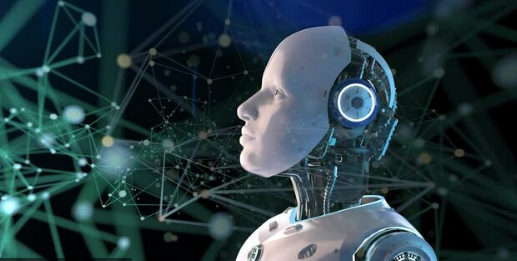From writing poetry to composing music and generating digital art, Artificial Intelligence (AI) is now stepping into territory once thought to be uniquely human: culture and creativity. But as AI-generated content floods our timelines, a deeper question emerges—can AI truly create culture, or is it just mimicking what already exists?
In this article, we’ll explore the complex relationship between AI and culture, what it means to create versus imitate, and whether machines can ever contribute to human expression in a meaningful way.
What Do We Mean by “Culture”?
Culture is more than entertainment or trends—it’s the shared beliefs, values, art, traditions, stories, languages, and symbols that define human communities. Culture evolves over time through experience, struggle, innovation, and expression.
It’s deeply emotional, socially rooted, and often born out of specific historical, political, or personal contexts.
Culture isn’t just what we make. It’s how we live, connect, and make sense of the world.
What AI Does Well: Mimicking Patterns
AI excels at learning patterns from existing data—huge amounts of it. Through models like ChatGPT, Midjourney, and DALL·E, AI can:
- Generate poems in the style of Shakespeare
- Create visuals that mimic Van Gogh or Picasso
- Write rap lyrics, symphonies, or novels
- Simulate conversations with historical figures
- Recommend viral trends based on user behavior
How It Works:
AI doesn’t “think” or “feel.” It statistically predicts what comes next based on patterns in the data it was trained on. That’s why AI often produces plausible-sounding outputs, but not necessarily original thought or emotion.
Imitation vs. Creation: What’s the Difference?
| Aspect | Imitation (AI) | Creation (Human) |
|---|---|---|
| Source | Based on past data and trends | Based on experience, intention, emotion |
| Meaning | Predicts what fits | Invents what resonates |
| Context | Lacks lived understanding | Reflects cultural, social, and emotional depth |
| Innovation | Remixes existing ideas | Can create entirely new styles or genres |
AI mimics the output of creativity—but not the origin of it.
Can AI Influence Culture? Absolutely.
Even if AI can’t invent culture on its own, it’s already shaping cultural behavior in meaningful ways:
1. Changing How We Create
- Artists use AI to collaborate, brainstorm, or expand ideas.
- Musicians use AI to generate beats or remix tracks.
- Writers use AI for plot generation or language inspiration.
2. Accelerating Trends
- Social media algorithms dictate what content goes viral.
- AI curates personalized feeds, reinforcing certain aesthetics or narratives.
- Meme generators and AI filters influence internet humor and pop culture.
3. Blurring the Line Between Artist and Audience
- Anyone with access to AI tools can generate art or stories—reducing the gap between consumers and creators.
- This democratization shifts how culture is made and shared.
4. Raising New Cultural Debates
AI’s influence has sparked global conversations around:
- Originality and plagiarism
- The role of human emotion in art
- Ethics of AI-generated content
- Ownership and intellectual property rights
When AI Collaborates, Not Replaces
Some of the most exciting cultural outputs come not from AI alone, but from humans using AI as a co-creator.
Real Examples:
- Grimes, the musician, released AI-generated vocals and encouraged fans to create with her voice.
- The Next Rembrandt, an AI-generated painting, was trained on all of Rembrandt’s works—sparking debate about authorship.
- AI-scripted short films like Sunspring challenge ideas of narrative and originality.
In each case, the human direction shaped the cultural meaning, not the AI’s ability alone.
Can AI Understand Culture? Not Really.
AI lacks:
- Emotion – It doesn’t feel joy, grief, anger, or love.
- Experience – It hasn’t lived through oppression, loss, victory, or discovery.
- Intention – It doesn’t know why a story needs to be told or what it’s trying to say.
These are the very things that give culture its soul.
So while AI can replicate cultural forms, it cannot truly generate cultural meaning—not without human input.
The Danger: Homogenization of Culture
AI trained on popular datasets tends to reproduce the dominant narratives, which can:
- Erase minority voices
- Overemphasize Western perspectives
- Flatten cultural nuance and diversity
- Create an “echo chamber” of repeated styles and ideas
If we let AI dominate cultural production without intention, we risk making culture more uniform and less human.
The Opportunity: Amplifying Human Creativity
AI should not be seen as a replacement for culture-making—but rather as a tool to amplify it. With human guidance, AI can:
- Preserve endangered languages and oral traditions
- Make storytelling accessible to more people
- Help artists with disabilities express themselves
- Generate ideas that humans can refine and build on
Used thoughtfully, AI can enhance and extend the human voice—not erase it.
Final Thoughts: Culture Needs People
AI is a powerful tool. It can remix, regenerate, and even surprise us. But it doesn’t feel the world like we do. It doesn’t protest, celebrate, dream, or mourn.
Culture is made of memory, pain, joy, rebellion, tradition, and transformation—things AI cannot truly experience.
So, can AI create culture?
Not alone.
But when humans guide AI, with intent and emotion, we can create something new together—something that reflects the best of human experience, powered by machine intelligence.
Also Read :
